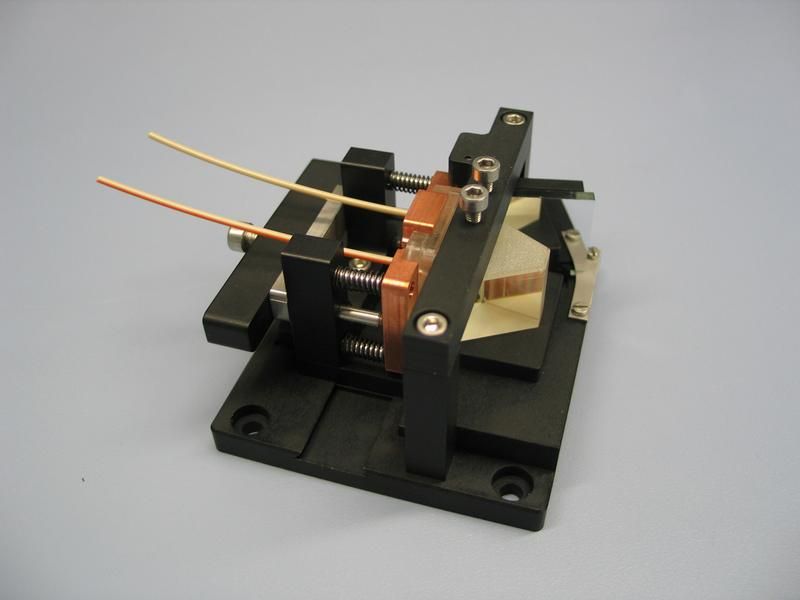Blood diagnosis - chip-based and mobile
The analysis takes just a few minutes and the doctor knows straight-away whether there are any pathogens in the blood. An improved marker-free technique provides the basis for faster analysis, whether in a hospital or for mobile blood donations.

This unit houses the encapsulated measurement chip with which blood samples can be tested on site for pathogens.
© Fraunhofer IBMT
If a person loses a large amount of blood the consequences can be critical. That's why adequate quantities of donated blood have to be kept available in hospitals and blood banks. In Egypt doctors collect blood by traveling to towns and villages and conducting blood donation sessions in a laboratory bus. The problem is that 25 per cent of the samples taken contain pathogens, including HIV, hepatitis and syphilis. As these diseases can be passed on in transfusions, the contaminated blood cannot be used. Conventional fast tests are not suitable in most cases for mobile use.
In future a rapid and robust analysis technique could help. A few drops of blood could be tested in the bus to check whether it can be used. Only if the result is positive will the doctors take a larger quantity from the donor. The basis for this has been provided by research scientists at the Fraunhofer Institute for Biomedical Engineering IBMT in Sankt Ingbert under an EU project also involving the Egyptian company VACSERA, Mivitec GmbH, the Institute for Analytical Sciences ISAS in Dortmund and the University of Lausitz. “Our consortium has developed a glass chip which has antibodies on it. Tiny surface oscillations are induced in the chip. If the relevant virus binds with an antibody, the oscillation changes,” explains Dr. Thomas Velten, Head of Department at the IBMT. The technique is not new, but the chip that has been developed offers advantages. Usually there is only one measurement field and a reference field next to it, positioned a just a few millimeters apart. But the temperature there can be different. On the new chip, the measurement and reference fields are divided into narrow strips which in each case are located right next to each other. As a result the chip is more resistant to fluctuations in temperature. What’s more, the new chip consists of four analysis squares, which means that the blood can be examined for four different pathogens during each test.
It has also been difficult up till now for laboratory workers to avoid contact with the blood and protect themselves from infections while conducting tests in the bus. The researchers at the IBMT have therefore encapsulated the chip. This makes the blood follow a defined course on the chip, protecting the user. Dr. Velten estimates that the device could come onto the market in about three years' time.
Other news from the department science

Get the analytics and lab tech industry in your inbox
By submitting this form you agree that LUMITOS AG will send you the newsletter(s) selected above by email. Your data will not be passed on to third parties. Your data will be stored and processed in accordance with our data protection regulations. LUMITOS may contact you by email for the purpose of advertising or market and opinion surveys. You can revoke your consent at any time without giving reasons to LUMITOS AG, Ernst-Augustin-Str. 2, 12489 Berlin, Germany or by e-mail at revoke@lumitos.com with effect for the future. In addition, each email contains a link to unsubscribe from the corresponding newsletter.
























































